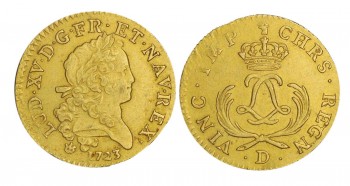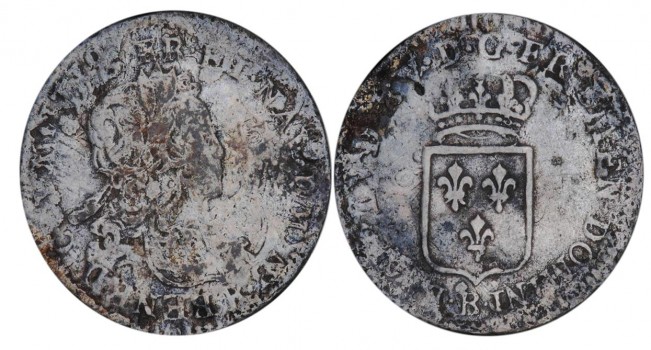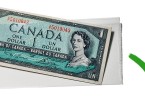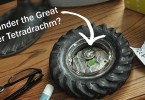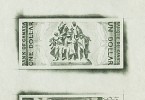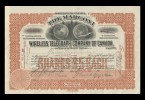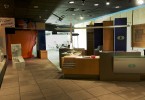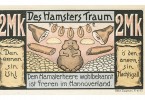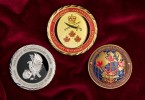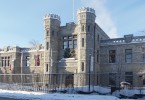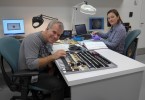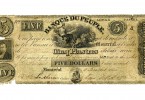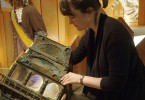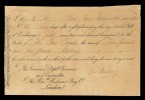Rediscovering the NCC’s treasure troves
With over 100,000 artifacts in the National Currency Collection, it shouldn’t be surprising that some things are forgotten about. Take for example the “treasure troves,” coins that have been salvaged from shipwrecks.
A 17th century Spanish galleon. A painting by Cornelius Verbeeck. (Wikimedia:Lalay, The National Gallery)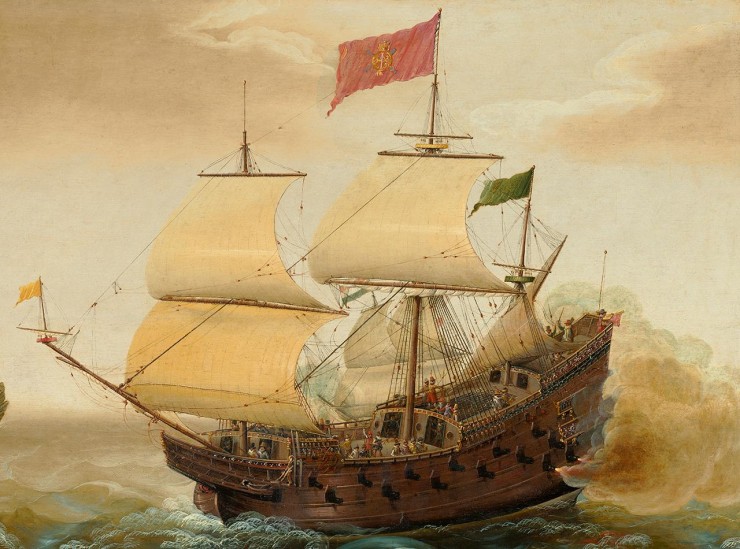
During the “Age of Discovery,” the likes of Christopher Columbus, Vasco da Gama, Amerigo Vespucci and Jacques Cartier petitioned the European rulers to back their voyages through unchartered waters in search of new trade routes to the Far East. There were thousands of shipwrecks. Most were Spanish galleons, loaded with gold and silver from Central and South America; perishing at sea due to treacherous weather, pirates and armed conflict. Over a 400-year span, Spaniards had been draining the American continents of their mineral wealth. It is estimated that there were over 32,000 trans-oceanic voyages in this era.
Many of the notable shipwrecks discovered to date have been found off the coast of Florida. During the late-summer hurricane season, the stretch of water along Florida’s east coast and out toward the open seas was notorious for claiming many ships. Even during the 1950s and 60s, the area, which became known famously as the Bermuda Triangle, was the site of the mysterious disappearance of many aircraft and ships. Sailing vessels leaving the Caribbean bound for Europe had to follow the Florida coast north to find the favourable trade winds to bring them east across the Atlantic Ocean.
This Spanish gold cob was struck in Mexico City and recovered from a 1715 Fleet shipwreck. (NCC.2015.24.1)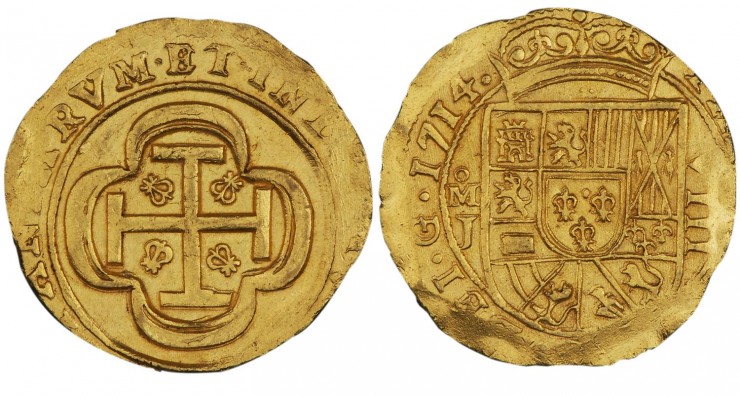
The coin featured above was salvaged from the so-called 1715 Treasure Fleet. It was in fact a combination of two fleets: one from Mexico and one from South America, totalling some 12 or 13 ships. The fleet was carrying over 1,000 people and 14 million pesos in coins (14 million dollars at the time). On June 30, 1715, off the east coast of Florida, the ships encountered a hurricane that destroyed the whole fleet. Hundreds of the crew and passengers were lost, along with the entire cargo of coinage. Modern salvage of the 1715 Fleet shipwreck began in the 1950s. Today, divers and salvagers continue to find coins from those wrecks.
Spanish 4 and 2 reales silver cobs from the Lima mint in Peru. (NCC.1993.12.1)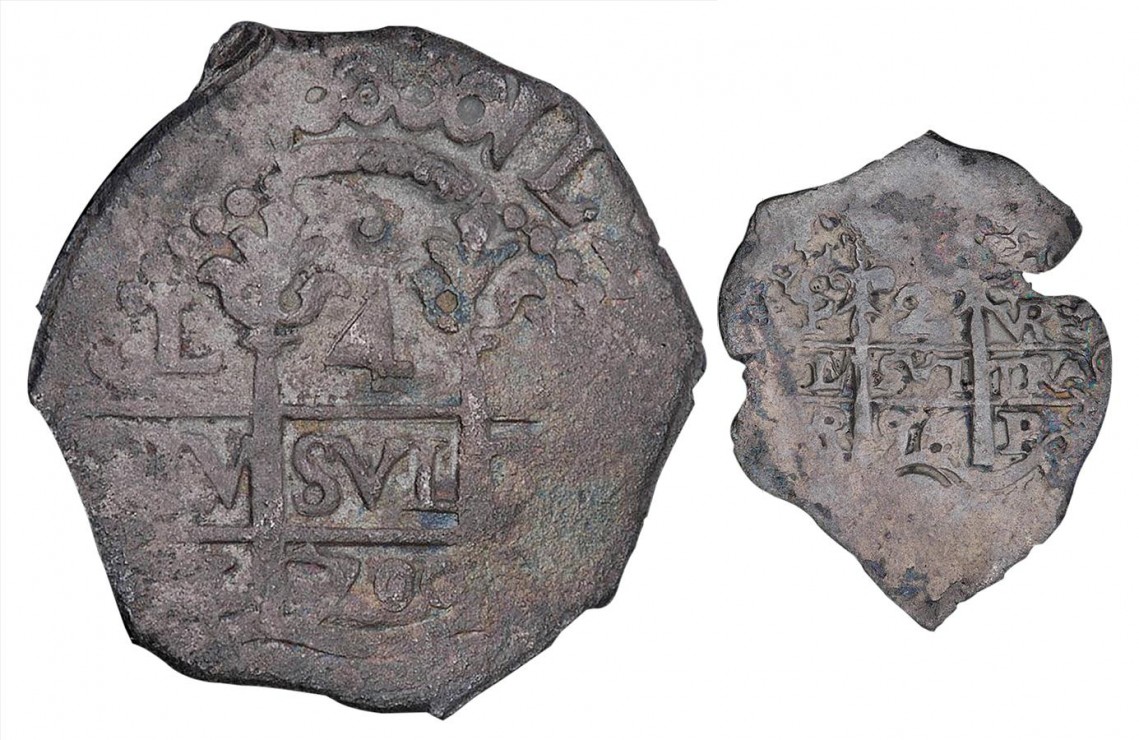
Canadian waters have also claimed their fair share of treasure ships. The HMS Feversham was a 32-gun British warship on its way from the Gulf of St Lawrence to New York with provisions and cash to assist the British campaign against the French (Queen Anne’s War, 1702–13). The Feversham, along with three other ships, sank off Scatarie Island near Louisbourg, Nova Scotia during a storm on October 7, 1711. Many souls perished in that storm and survivors bribed French fisherman to take them to New York. Attempts were made to salvage the wreck, but it lay untouched for centuries. Famous Canadian salvager Alex Storm’s diving team lifted the ships’ treasures in 1968. Subsequent searches of the wreck yielded more booty for fortunate divers. Below are a couple of Spanish cobs from that wreck. Spanish coins were so abundant and readily accepted, that it was not unusual to find them in the cache of a British ship.
In 1725, the rocky shores of Cape Breton’s east coast claimed another ship when the French man‑of‑war Le Chameau, bound for Louisbourg, was caught in a storm and driven onto the rocks off the coast. On board was 80,000 livres (about $12,000 in 1725 dollars) of French gold and silver coins destined for Québec. It was the loss of ships like this that forced the Intendant of New France, who was responsible for the colony’s finances, to issue playing‑card money as a temporary measure to pay the troops until more coinage arrived. The wreck of Le Chameau was discovered in 1961 and a salvage expedition begun in 1965. The contents of the stricken ship were sold at auction in 1971. These French gold louis and silver ecu coins are from among a couple of hundred the National Currency Collection acquired at a sale. Over the years, salt water had severely damaged the silver coins, yet the gold coins have remained completely intact, proving the metal’s resilience and value.
A Spanish/American silver “piece of 8” found on a Florida beach. This one’s not so good. (NCC.1972.70.1)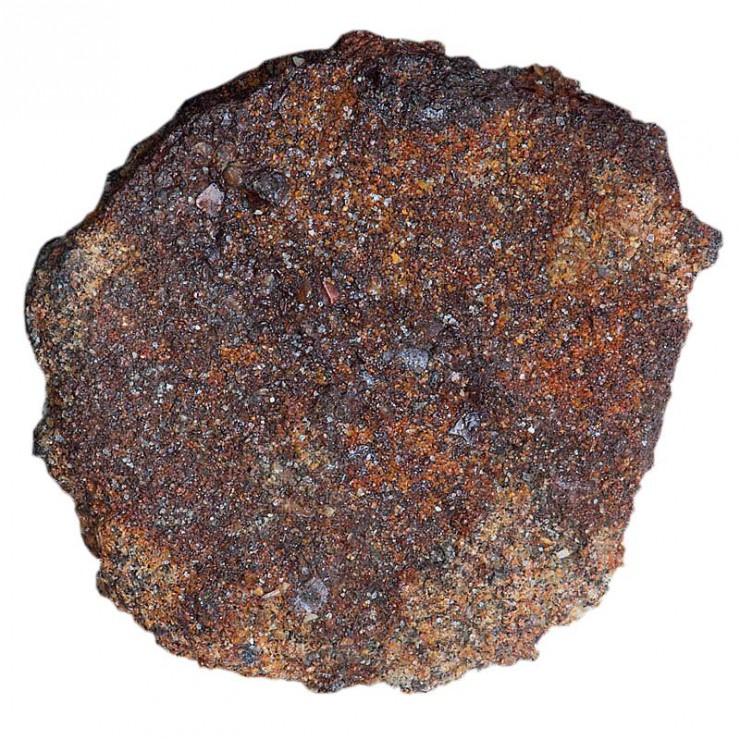
There have been thousands of shipwrecks, many of which, by any standards, carried enormous wealth. Treasure hunters have combed the beaches and oceans to uncover the rich treasures of gold and silver coins from the vast mines of Latin America or from European colonial powerhouses like France, Great Britain and the Netherlands. I would like to think that rediscovering the treasure trove coins in the National Currency Collection has been my own treasure hunt and that I can now share the wealth of knowledge about these fascinating coins with our curious and inquisitive visitors.
The Museum Blog
Becoming a Collector II
By: Graham Iddon
So now you’ve decided that collecting currency is far more fascinating than collecting 14th Century Flemish altar paintings and have begun to accumulate some items. Good for you, those paintings are a bother to dust and currency is far easier to take care of.
Becoming a Collector I
By: Graham Iddon
Collecting things is a very common human urge. Be they matchbooks, pop bottles or 17th century Flemish altar paintings, owning large numbers of the same type of thing is a fascinating pastime for many of us.
The Adventure of Exhibit Planning III
By: Graham Iddon
During the planning stages stamping the word ‘final’ on any given aspect of a travelling exhibition can seem less of a directive and more of an overly optimistic suggestion.
Notes from the Collection: Recent Acquisitions II
By: Paul S. Berry
This month’s selections highlight various areas of Collection development. These include what are called financial instruments: items such as stocks, bonds shares and other articles that represent a contract to deliver money in some manner.
Museum Reconstruction - Part 1
By: Graham Iddon
In early February, a small group from the Bank’s Communications Department booked a brief tour of the main floor and first basement at the Wellington Street head office. It’s still in the demolition phase of the renovation.
Notes from the Collection: Notgeld, Emergency Money from Interwar Europe
Notgeld, German for emergency money, first appeared at the beginning of World War One and was issued until 1924. Through these notes we can see the entire story of Germany’s experience with out-of-control inflation between the wars.
Notes From the Collection: Recent Acquisitions
By: Paul S. Berry
Before the Museum closed, and the Collection moved to Gatineau, the curators regularly hosted a show and tell session for staff to see new acquisitions. With the help of the Museum’s new blog, that tradition will continue; only now, you too will be able to see and learn about some of the brilliant new stars in the Collection. Get out your sunglasses!
We’re the Currency Museum, not the Mint
By: Graham Iddon
If we had a nickel for every time people asked questions like that, we’d have… Well, I suppose we have roughly that number of nickels already; we have a long history as a currency museum after all. When the museum was open, somebody would ask a similar question several times a week.
Notes from the Collection: Moving Forward
By: Raewyn Passmore
After four months in our new digs the Collections Team is starting to settle in. But even though most of the boxes have been unpacked there is still a lot of work to do. In 2014 we will be collaborating with the Exhibitions Team on travelling exhibits and coming up with ideas for the new museum space.
Notes from the Collection: A Buying Trip to Toronto
By: Paul S. Berry
Recently, from October 3 to 5th, collections staff were at the Toronto Coin Expo, held at the Toronto Reference Library on Yonge Street. The show boasts informative lectures, a large auction of coins, tokens and paper money as well as a showroom, called a bourse, where dealers greet clients and buy and sell material.
Director’s chair : A little help from our friends
By: Ken Ross
In one of my favourite cinematic moments, the 11 year-old chess prodigy, Josh Waitzkin, imagines sweeping the pieces off a chess board in order to help him think more clearly about an important game of chess. It is a championship game and he is on the brink of winning it all.
The Cases are Almost Empty
By: Graham Iddon
For the first time since they went into their cases in 1980, over 2000 coins, notes, beads and shells are coming back out. The Museum’s curatorial staff are busily pulling panels from cases, placing coins into specially prepared drawers and sliding notes into acid-free Mylar envelopes.
Curators Begin Removal of Artifacts
By: Graham Iddon
The doors were barely closed following Big Top Farewell event before Chief Curator Paul Berry and his team began emptying display cases that had been sealed shut since 1980. The biggest task involved removing more than 2500 bank notes from the room we knew as Gallery 8.
Notes from the Collection : 2013 RCNA Convention Winnipeg
By: David Bergeron
Another convention of the Royal Canadian Numismatic Association (RCNA) wrapped up in July. This year the convention was held in Winnipeg, Manitoba. It was the first time in over thirty years that the RCNA Convention made a stop there.
